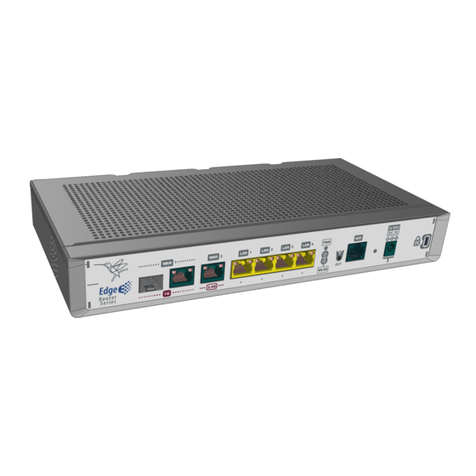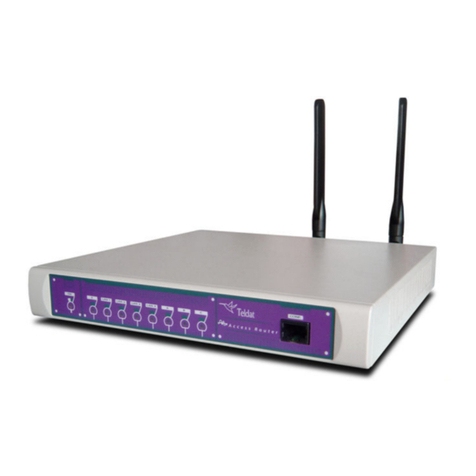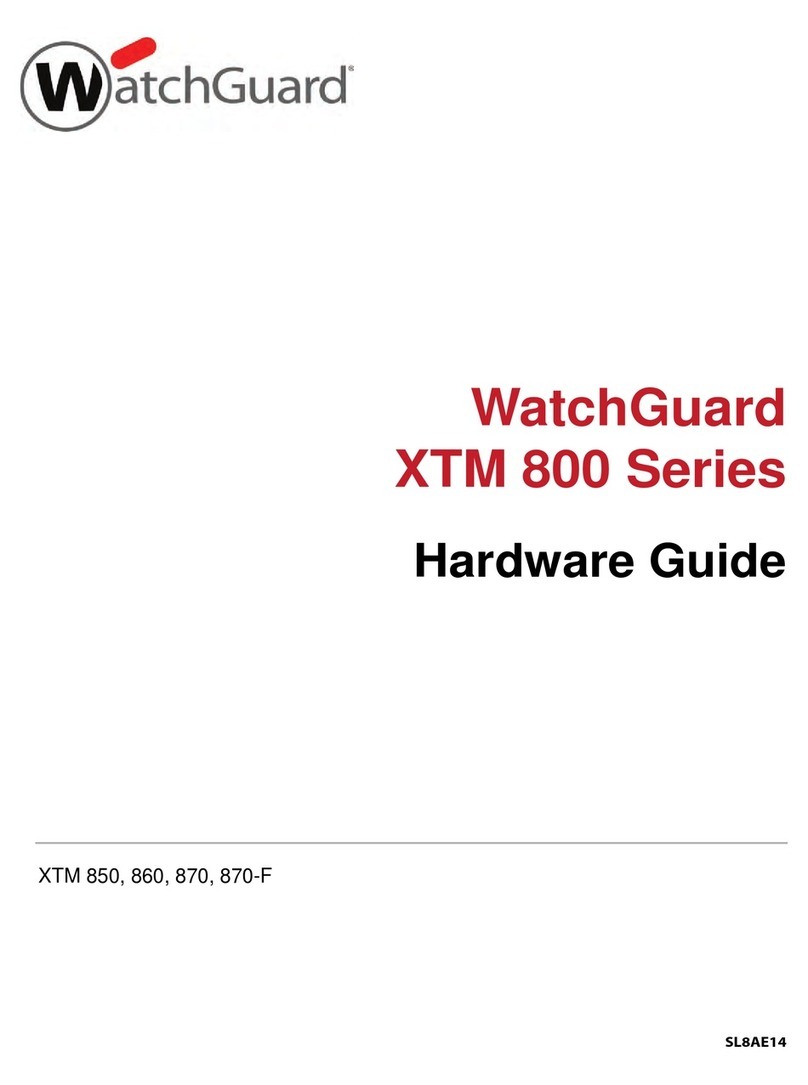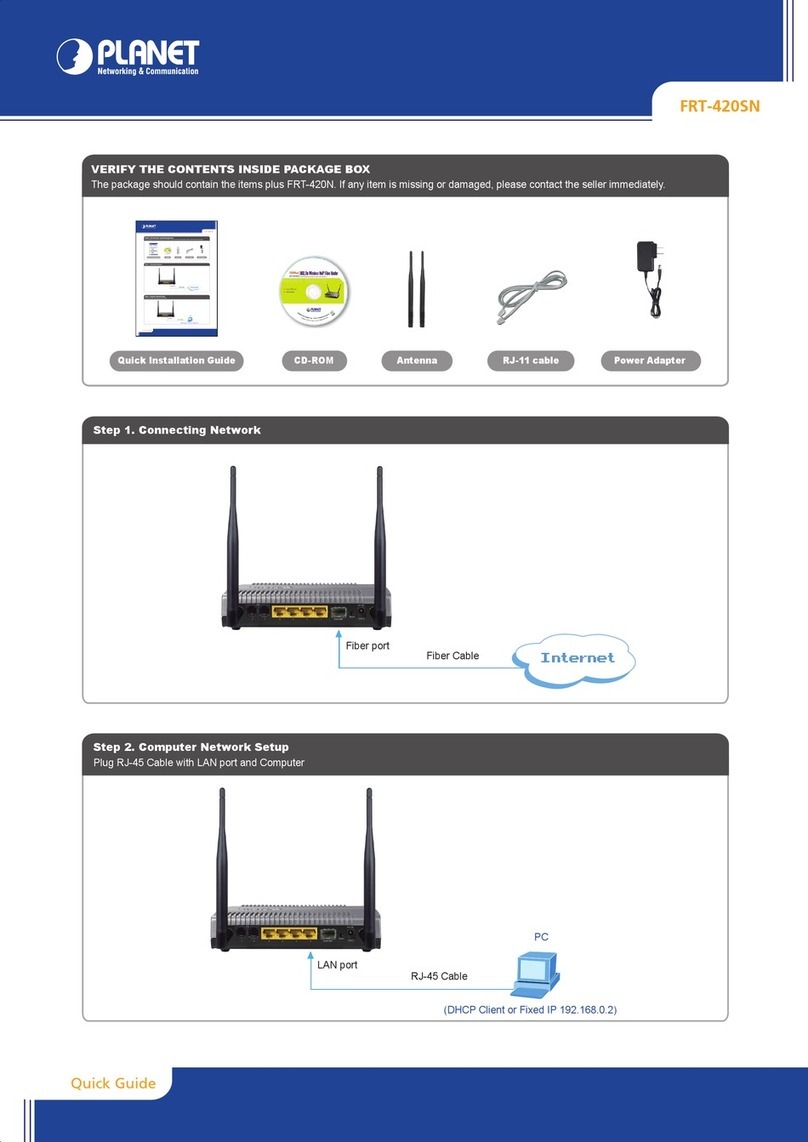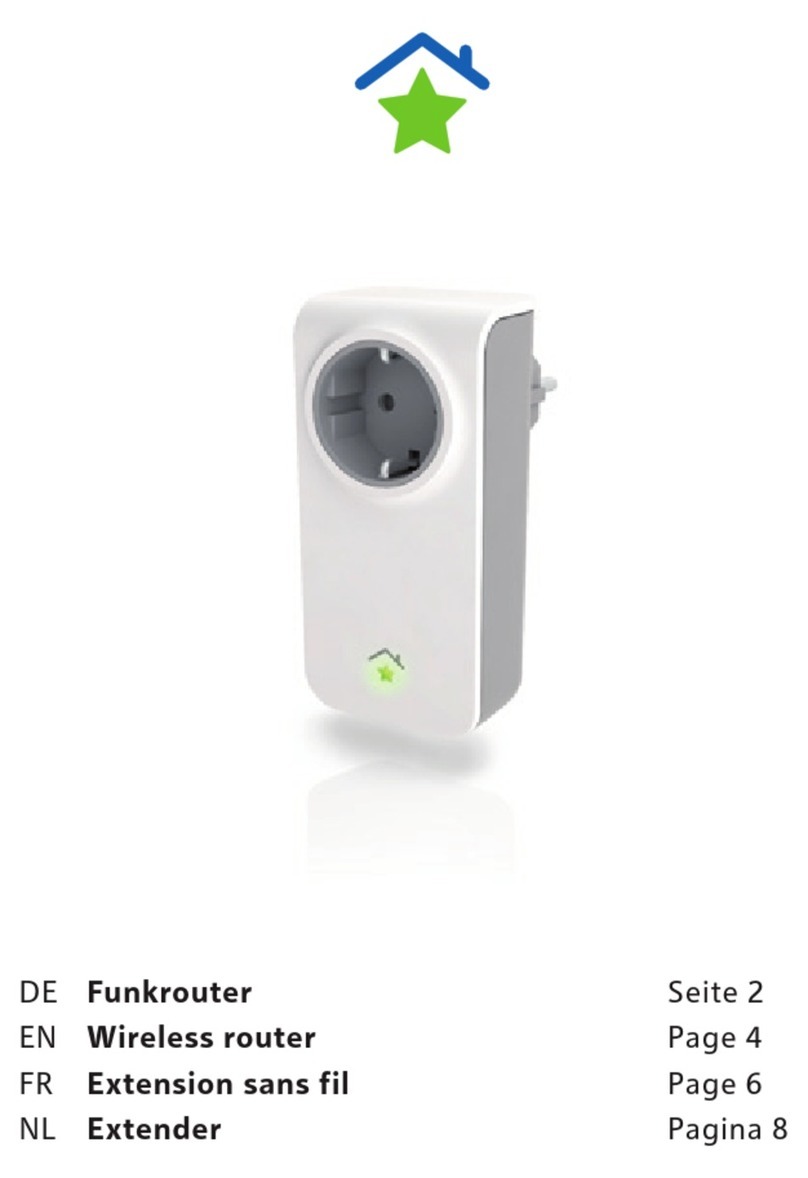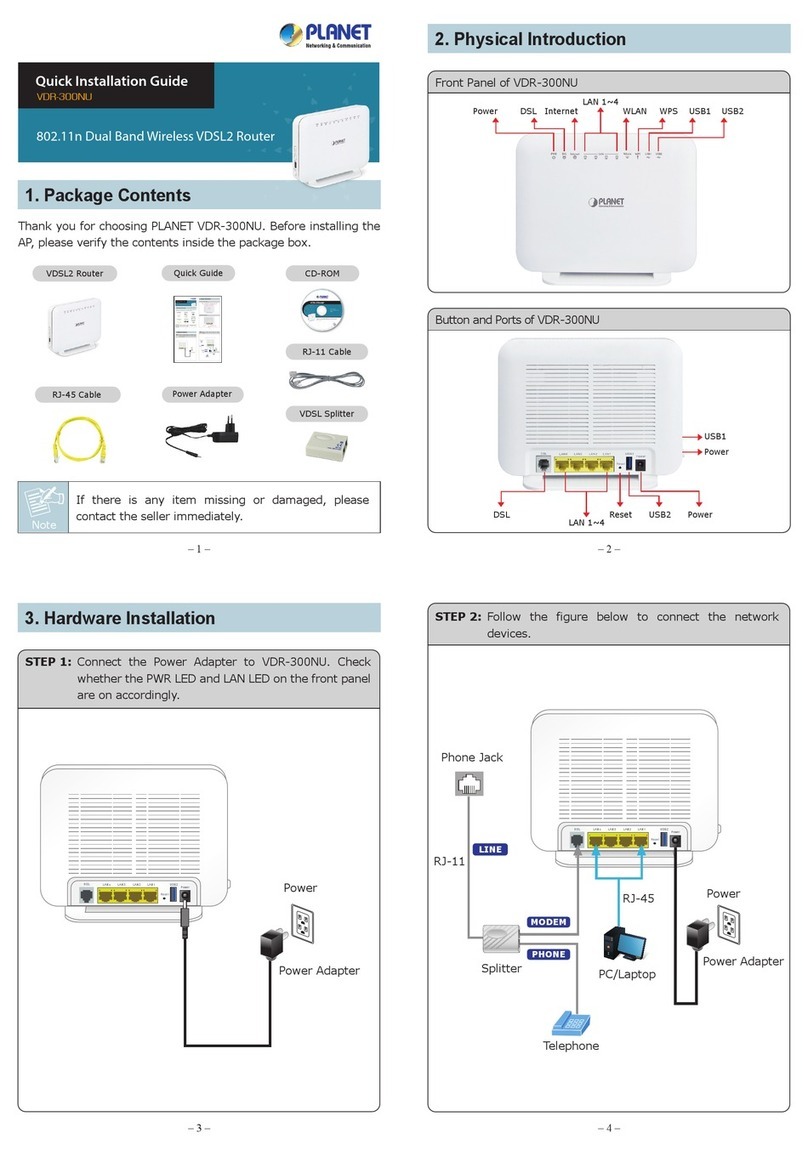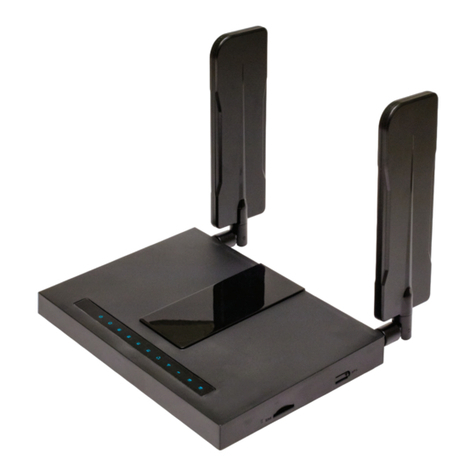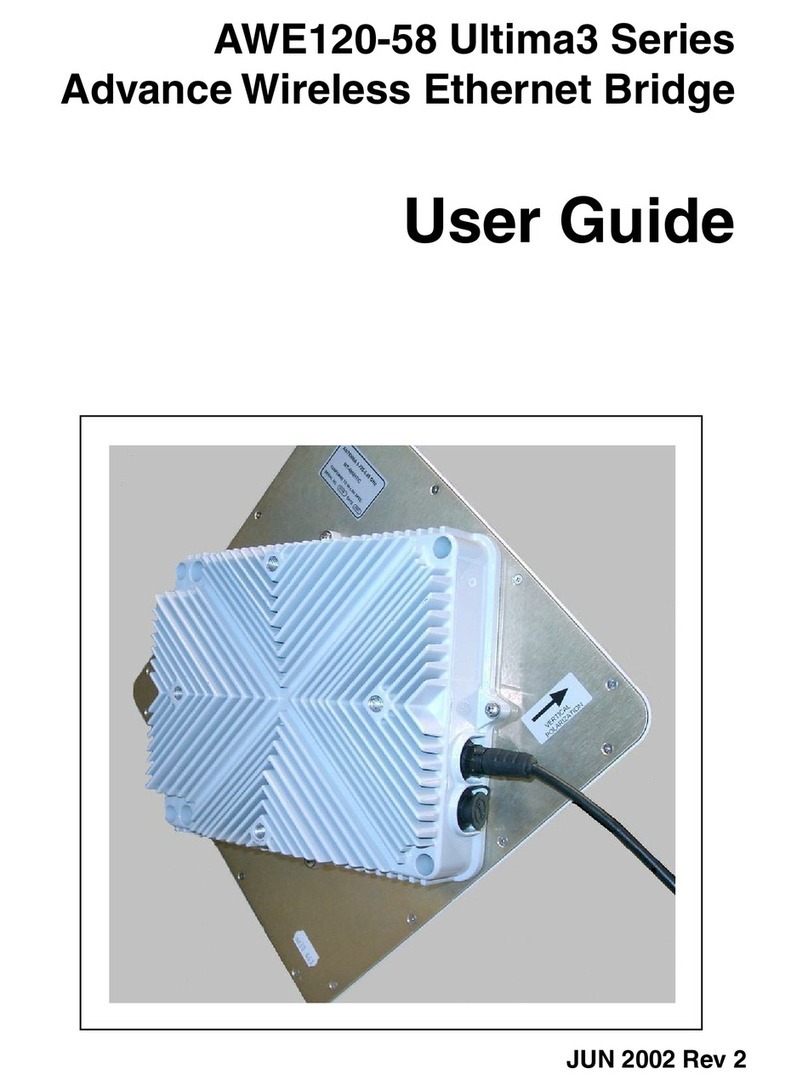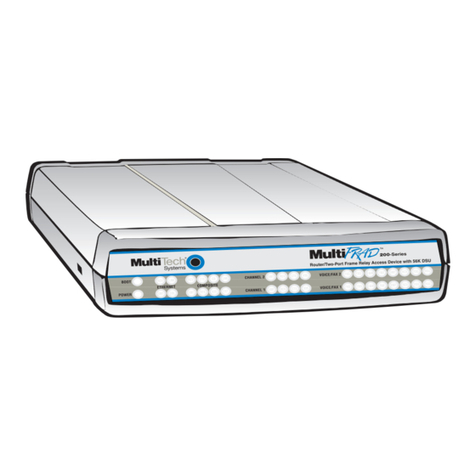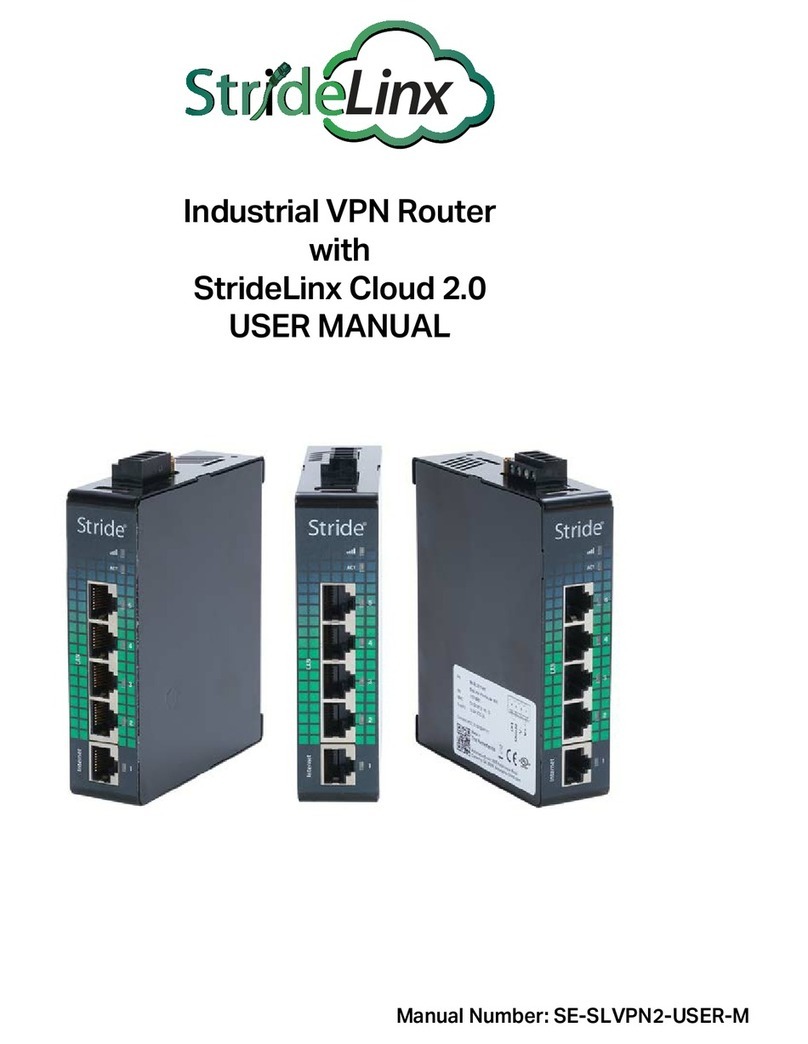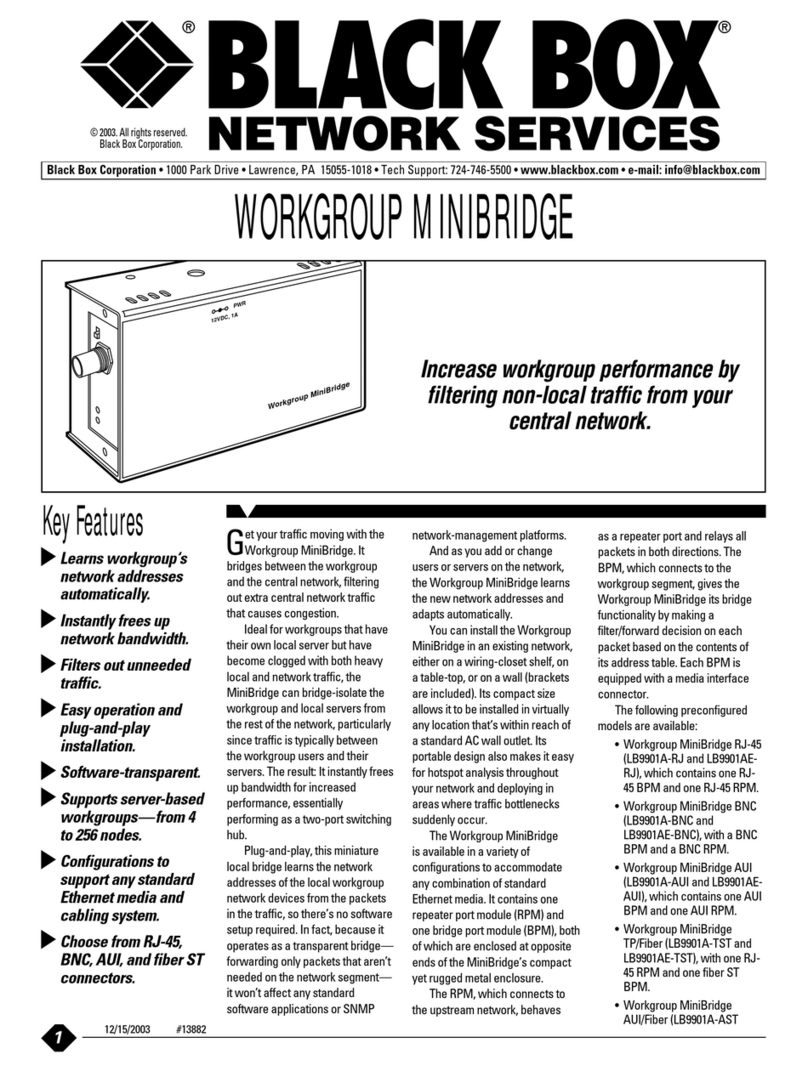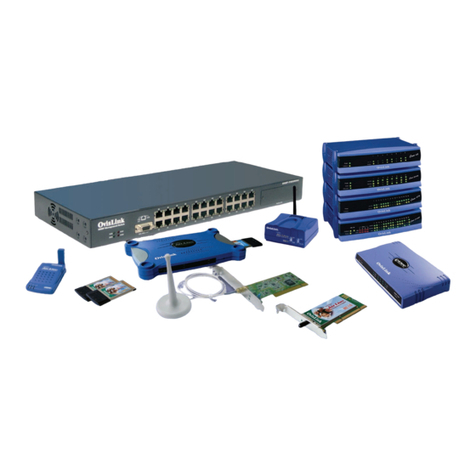Teldat Router User manual

Teldat Router
PCMCIA-UMTS Interface
Doc. DM757-I Rev. 10.60
March, 2007

INDEX
Chapter 1 Introduction.....................................................................................................1
1. Description.........................................................................................................................2
Chapter 2 Configuration...................................................................................................4
1. Introduction........................................................................................................................5
1.1. Adding a PCMCIA-UMTS device..........................................................................5
1.2. DIAL Connection Profile........................................................................................6
a) 3GPP-ACCESSIBILITY-CONTROL.......................................................................6
•3GPP-ACCESSIBILITY-CONTROL PING...............................................7
•3GPP-ACCESSIBILITY-CONTOL TRACE..............................................7
•3GPP-ACCESSIBILITY-CONTROL TIMER............................................7
•3GPP-ACCESSIIBILITY-CONTROL TRAFFIC.......................................7
b) 3GPP-BEARER-SERVICE-TYPE...........................................................................8
1.3. Adding a PPP Interface........................................................................................8
2. PPP Configuration..............................................................................................................9
2.1. Base Interface..........................................................................................................9
2.2. PPP Connection Profile...........................................................................................9
3. Configuring the UMTS Interface .......................................................................................11
3.1. ? (HELP).................................................................................................................11
3.2. ADDITIONAL-CONTROL-COMMAND.............................................................12
3.3. ALWAYS-ATTACHED.........................................................................................12
3.4. DISABLE................................................................................................................12
a) DISABLE FLOW-CTRL-OPTION ..........................................................................12
3.5. ENABLE.................................................................................................................13
a) ENABLE FLOW-CTRL-OPTION............................................................................13
3.6. FRAME-SIZE.........................................................................................................13
3.7. NO...........................................................................................................................13
3.8. PIN..........................................................................................................................13
3.9. SPEED....................................................................................................................14
3.10. UMTS .....................................................................................................................14
a) UMTS DOMAIN......................................................................................................14
b) UMTS MODE..........................................................................................................14
3.11. WAIT-TIME...........................................................................................................14
3.12. EXIT .......................................................................................................................15
4. Configuring IP....................................................................................................................16
4.1. Events......................................................................................................................16
4.2. Saving the configuration.........................................................................................16
4.3. Checking card detection..........................................................................................16
4.4. Checking the connection.........................................................................................17
5. Configuration Templates....................................................................................................20
Chapter 3 Monitoring .......................................................................................................22
1. Interface Monitoring Commands .......................................................................................23
1.1. AT-MODE..............................................................................................................23
1.2. BITRATE................................................................................................................23
1.3. COMMAND...........................................................................................................24
1.4. DISCONNECT.......................................................................................................24
1.5. GPRS ......................................................................................................................24
a) GPRS ATTACH.......................................................................................................24
b) GPRS CELLIFO......................................................................................................25
c) GPRS DETACH......................................................................................................25
d) GPRS IMEI .............................................................................................................25
- ii -

e) GPRS IMSI..............................................................................................................25
f) GPRS LIST..............................................................................................................25
g) GPRS NEIGHBOUR...............................................................................................25
h) GPRS OPERATOR..................................................................................................26
i) GPRS QUALITY......................................................................................................26
j) GPRS SIM-ID..........................................................................................................26
1.6. LIST........................................................................................................................26
1.7. RESET....................................................................................................................27
1.8. EXIT .......................................................................................................................27
2. PCMCIA Monitoring Commands......................................................................................28
2.1. SYSTEM PCMCIA DEBUG..................................................................................28
2.2. SYSTEM PCMCIA DUMP....................................................................................29
a) SYSTEM PCMCIA DUMP CIS-CARD ...................................................................29
b) SYSTEM PCMCIA DUMP CIS-REG......................................................................31
c) SYSTEM PCMCIA DUMP SOCKET-LIST.............................................................31
d) SYSTEM PCMCIA DUMP SOCKET-STATE..........................................................31
e) SYSTEM PCMCIA DUMP PCI...............................................................................32
f) SYSTEM PCMCIA DUMP SUPPORTED...............................................................32
- iii -

Chapter 1
Introduction

1. Description
UMTS mobile technology
UMTS technology (Universal Mobile Telecommunications System) is the terminology used in
Europe when referring to Third Generation mobile services and networks.
This permits data transmission at a maximum speed of 384 Kbps, theoretically better than ISDN and
standard ADSL lines. Compared with current mobile technology, this can operate eight times faster
than GPRS and forty times faster than GSM.
The main advance here is the WCDMA technology (Wide Code Division Multiple Access) inherited
from military technology, in contrast to GSM and GPRS which use a mixture of FDMA (Frequency
Division Multiple Access) and TDMA (Time Division Multiple Access). The principal advantage of
WCDMA lies in the fact that the signal expands in frequency thanks to an expansion code only known
to the transmitter and the receiver.
This form of modulation has numerous advantages:
•High transmission speeds, by using the whole spectrum.
•High security and confidentiality, due to the use of techniques that come nearer using the
maximum channel capacity. (E.g. convolutional encoders).
•Maximum multiple access effectiveness, while hop sequences do not coincide.
•High interference resistance.
Main characteristics
This technology is suitable for a wide variety of users and services, not just for advanced users, UMTS
offers the following:
•User friendly and economic: UMTS provides easy to use and adaptable services.
•New and better services: Users can demand high quality voice services from UMTS as well as
data and information services.
•Fast access: The main advantage of UMTS compared to the mobile second generation (2G) is
the capability to support high data transmission speeds, up to 144 Kbps over high speed
mediums, 384 Kbps in open outlying areas and 2 Mbps where there is reduced mobility
(inside buildings). This capacity added to inherited support from Internet Protocol (IP),
powerfully combine to provide interactive multimedia services and new broadband
applications.
•Data packet transmission and data transference speed on demand: UMTS offers transmission
of data in packets and over high speed switch circuits due to the virtual connectivity in the
network at all times and the alternative billing methods (e.g. pay per byte, by session, flat rate,
asymmetric broadband for ascending / descending link) according to the needs of the various
data transmission services which are emerging.
UMTS network structure
This is made up of two large subnets: the telecommunications network and the management network.
The first aims to sustain the transfer of information between connection ends. The second network’s
task is to provide the means for billing and rates for the subscribers, the registration and definition of
the service profiles, management and security for data handling. It also handles network elements
operation with the aim of ensuring this functions correctly and for detection and resolution of
breakdown and abnormalities or recuperation of operations after periods where this is off or some of
the elements have disconnected.
TELDAT ROUTER– UMTS Introduction
I - 2 Doc.DM757-I
Rev.10.60

A UMTS network is made up of the following elements:
•Core Network.
The Core Network incorporates transport and intelligence functions. The first ones support
traffic and signaling information transport, including switching. The routing resides in
intelligence functions consisting of features such as logical and the control of certain services
offered through a series of well-defined interfaces; also including mobile management.
Through the Core Network, the UMTS connects to other telecommunication networks thus
allowing communication with both UMTS mobile users and for users connected to other
networks.
•Radio access network (UTRAN).
Radio access network provides the connection between mobile terminals and the Core
Network. In UMTS this is known as UTRAN (UMTS Terrestrial Radio Access Network –
UTRAN) and consists of a series of radio network systems or RNC (Radio Network
Controller) and a series of B Nodes dependent on this. B Nodes are network elements that
correspond to the base stations.
•Mobile Terminals.
UMTS specifications use the term User Equipment (UE).
TELDAT ROUTER– UMTS Introduction
I - 3 Doc.DM757-I
Rev.10.60

Chapter 2
Configuration

1. Introduction
UMTS interface control is carried out through a series of AT commands internally generated by the
device and others which can be modified by the user.
The rest of the particular connection parameters are programmed in the dial and PPP protocol profiles.
Before carrying out configuration, you need to know the data provided by the carrier to configure the
connection. The following table provides a series of data regarding Spanish carriers “anonymous”
accesses as well as an example of VPN access from a fictitious carrier. Please remember that both
lower and upper case letters are sensitive i.e. they must be written as given.
MOVISTAR ORANGE VODAFONE VPN
APN movistar.es internet airtelnet.es apnname.es
PDP-Type IP IP IP IP
Login MOVISTAR CLIENTE vodafone OPERADOR_LOGIN
Password MOVISTAR AMENA vodafone OPERADOR_PASS
Another piece of data that we must bear in mind is that if you require a permanent connection (from
device startup), idle-time = 0, or on demand with a determined release time, idle-time = x
Additionally we need to know the SIM PIN value going to be used. For those cases where the SIM is
not blocked (i.e. PIN is not required), you do not need to configure it.
The steps to execute in order to completely configure the connection are as follows:
1.1. Adding a PCMCIA-UMTS device
The UMTS interface currently available in the device is based on the use of PCMCIA-UMTS cards
provided by the carriers, NOVATEL MERLIN U530 for example.
These cards are installed over the PCMCIA connectors available in the device.
The device therefore needs to know where the cards are going to be installed from the device
configuration menu (p 4).
add device pcmcia umts X Y:
X value indicates the SLOT where this will be installed.
Y value is an index in cases where multifunction cards are supported.
set data-link at <interface>
Indicates that an AT commands interface is used over the created interface.
Example:
We have a PCMCIA interface in SLOT 2, over which we are going to insert a UMTS card.
We create the umts2/0 interface and indicate that AT commands will be used over it.
Config>add device pcmcia umts 2 0
Config>set data-link at umts2/0
TELDAT ROUTER– UMTS Configuration
II - 5 Doc.DM757-I
Rev.10.60

1.2. DIAL Connection Profile
The following values must be programmed:
remote-address:
The remote-address value is always the same (*99***1#) and is the number providing access
to the UMTS network. You do not need to program this as on programming a 3gpp-apn value,
the remote address is automatically generated.
3gpp-apn:
This is the UMTS node through which the connection is carried out. This value depends on
the carrier.
3gpp-pdp-type:
Programs the type of Protocol Data Packet to be used in the connection. This depends on the
service provided by the carrier. Normally this is the IP which coincides with the default value.
3gpp-accessibility-control:
Permits you to enable connectivity control over the profile. This also permits different
accessibility controls for different profiles. This is explained in more detail further on in this
manual.
3gpp-bearer-service:
Permits programs for CSD connections (i.e. connections for a number, not connections for an
APN) to have a series of characteristics, allowing you to program type of norm, speed, etc.,
provided the inserted module supports this. This is explained in more detail further on in this
manual.
idle-time:
Indicates the time period where disconnection is carried out due to absence of data.
A 0 idle time value means the device will immediately execute the UMTS connection. Any
other value programs the disconnection without data period.
Example:
Config>global-profiles dial
-- DIAL PROFILE Configuration --
DIALPROF config>
DIALPROF config>profile UMTS default
DIALPROF config>profile UMTS dialout
DIALPROF config>profile UMTS 3gpp-apn movistar.es
DIALPROF config>profile UMTS 3gpp-accessibility-control traffic 6 all
DIALPROF config>profile UMTS idle-time 60
DIALPROF config>
DIALPROF config>exit
Config>
a)
3GPP-ACCESSIBILITY-CONTROL
One of the drawbacks to UMTS connections is verifying UMTS availability.
As already mentioned, the mechanism the PPP protocol has for point-to-point connection control
(Echo-request/Echo-reply) is ineffective in these connections as it is only significant at a “local” level
i.e. between the router and the connected module.
Various mechanisms have been implemented to verify the connection status. These can be grouped
into two types, intrusive (originating data traffic on line and therefore billable) and non-intrusive (does
not originate data traffic).
Each of the described mechanisms can be independently configured over each profile configured in
the interface.
TELDAT ROUTER– UMTS Configuration
II - 6 Doc.DM757-I
Rev.10.60

•Intrusive
•
3GPP-ACCESSIBILITY-CONTROL PING
Once the UMTS connection has been established, pings are sent every so many seconds,
indicated in the command, to the configured IP address.
If this times out without having received a response from the remote, a second ping is sent and
a response is expected within 10 seconds. If no response is received, two more pings are sent
every 5 seconds. If no response is received, the device disconnects.
The command is: 3gpp-accessibility-control ping <A.B.C.D> <timer>
<A.B.C.D> : IP Address where the pings are sent.
<timer>: Time between pings.
Example:
Dial Profiles config>profile X 3gpp-accessibility-control ping 10.10.1.1 60
Dial Profiles config>
•
3GPP-ACCESSIBILITY-CONTOL TRACE
Identical to the above, but this sends an ICMP trace route.
The command is 3gpp-accessibility-control trace <A.B.C.D> <timer>
<A.B.C.D>: IP address where the traces are sent
<timer>: Time between them.
Ejemplo:
Dial Profiles config>profile X 3gpp-accessibility-control trace 10.10.1.1 60
Dial Profiles config>
•Non-Intrusive
•
3GPP-ACCESSIBILITY-CONTROL TIMER
Independently to the idle-time value configured in the connection profile, disconnection is
carried out when the configured timer value times out.
The command is: 3gpp-accessibility-control timer <value>
<value>: Timer value between 60 and 86399 seconds.
Ejemplo:
Dial Profiles config>profile X 3gpp-accessibility-control timer 60
Dial Profiles config>
•
3GPP-ACCESSIIBILITY-CONTROL TRAFFIC
This consists of monitoring the data flow in both directions at the IP layer, TCP or any.
The mechanism initiates from the fact that when there is outgoing traffic, there will always be
incoming. A counter for sent frames starts (depending on the type). This value resets each
time there are incoming frames, independently of the type.
The command is: 3gpp-accessibility-control traffic <counter> <type>
<counter> : represents the limit for the outgoing packets (sent to the network) for the
type configured without receiving incoming packets. Once this value has been
reached, the link disconnection process activates in order to try a new connection.
<type>: Type of monitored outgoing traffic.
TELDAT ROUTER– UMTS Configuration
II - 7 Doc.DM757-I
Rev.10.60

IP: All IP traffic (TCP, UDP, etc).
TCP: Only considers TCP traffic for connection control.
ALL: Considers all traffic including non-IP traffic.
Ejemplo:
Dial Profiles config>profile X 3gpp-accessibility-control traffic 6 IP
Dial Profiles config>
b)
3GPP-BEARER-SERVICE-TYPE
The following commands appear in this profile:
Dial Profiles config> profile X 3gpp-bearer-service speed <value>
Dial Profiles config> profile X 3gpp-bearer-service name <value>
Dial Profiles config> profile X 3gpp-bearer-service name <value>
Dial Profiles config>
These commands allow CSD calls (i.e. those for a number, not those for an APN) to take a series of
characteristics.
You can for example, and if the module supports this, execute calls to ISDN destination numbers
(numbers which indicate V.110 in speed), etc.
Values that appear as value are those defined by the 3GPP TS 27.007 for CSD calls norm.
Not all the values are possible; this depends on the module and the network. If this is incorrectly
programmed, the module will return an error but will try and execute the call anyway. You need to be
very careful when using this command.
The following command will appear before making an ATDXXXXXXXX call when the events are
enabled:
AT+CBST=speed,name,ce
Default is 0,0,1 --> Automode.
To find out the values which permit a determined module or card, enter the commands mode, as
explained in the section on monitoring, and enter AT+CBST=?.
1.3. Adding a PPP Interface
Add a PPP interface.
Example:
Config>add device ppp 1
Added PPP interface ppp1
Config>
TELDAT ROUTER– UMTS Configuration
II - 8 Doc.DM757-I
Rev.10.60

2. PPP Configuration
2.1. Base Interface
Configure the PPP parameters related to the base interface going to be used.
Example:
Config>global-profiles ppp
-- PPP Profiles Configuration --
PPP Profiles config
PPP Profiles config>
PPP Profiles config>lcp-options umts2/0 default
PPP Profiles config>lcp-options umts2/0 acfc
PPP Profiles config>lcp-options umts2/0 pfc
PPP Profiles config>lcp-options umts2/0 accm 0
PPP Profiles config>
PPP Profiles config>exit
Config>
2.2. PPP Connection Profile
Here we must indicate that the PPP interface must use the UMTS interface as the base interface
(“base-interface umts2/0 link” command) and use the UMTS profile for dialing (“base-interface
umts2/0 profile UMTS” command).
Similarly, program the appropriate parameters for the protocol.
The user and password sent during authentication must be appropriate for the carrier and the service
being used to connect (“authentication sent-user XXXXXX password YYYYY” command). These are
simply examples.
The IP address is normally assigned during the negotiation phase (“ipcp local address assigned”
command).
Echo functionality is not required (“lcp echo-req off” command). The PPP is only significant locally,
i.e. between the router and the connected UMTS module. The echo DOES NOT detect link drops nor
loss of signal.
Similarly, the extreme remote IP address that appears during negotiation is the module internal IP
address, which again makes no sense to have in the routing table. This can be ignored by using the
“no ipcp peer-route” command.
Example:
Config>network ppp1
-- Generic PPP User Configuration --
ppp1 config> base-interface
-- Base Interface Configuration --
ppp1 Base IFC config>
ppp1 Base IFC config>base-interface umts2/0 link
ppp1 Base IFC config>base-interface umts2/0 profile UMTS
ppp1 Base IFC config>
ppp1 Base IFC config> ppp
-- PPP Configuration --
TELDAT ROUTER– UMTS Configuration
II - 9 Doc.DM757-I
Rev.10.60

ppp1 PPP config>
ppp1 PPP config> authentication sent-user MOVISTAR password MOVISTAR
ppp1 PPP config> ipcp local address assigned
ppp1 PPP config> lcp echo-req off
ppp1 PPP config> no ipcp peer-route
ppp1 PPP config>
ppp1 PPP config>exit
ppp1 config>
ppp1 config>exit
Config>
TELDAT ROUTER– UMTS Configuration
II - 10 Doc.DM757-I
Rev.10.60

3. Configuring the UMTS Interface
The UMTS interface as such is an AT commands interface
There are certain commands which are common for all the device’s interfaces. These commands are
described in the manual on configuring common interfaces (Dm 772-I Common Configurations for
Interfaces).
The available programming commands are as follows:
Command Functions
? (HELP) Lists the available commands or their options.
ADDITIONAL-CONTROL-COMMAND Configures the connectivity control.
ALWAYS-ATTACHED Controls the module attach/detach to the network.
DISABLE Disables functionalities.
ENABLE Enables functionalities.
FRAME-SIZE Configures the base interface frame size.
NO Permits you to configure default values or negate a
command.
PIN Programs the PIN number for the SIM module used.
SPEED Programs the interface speed.
UMTS Permits you to configure UMTS connection
parameters.
WAIT-TIME Configures the physical connection maximum wait
time.
EXIT Returns to the configuration menu.
3.1. ? (HELP)
Displays a list of the available commands or their options.
Syntax:
umts2/0 AT config>?
Example:
umts2/0 AT config>?
accessibility-control Set GPRS accessibility control
always-attached In PDP context disconnection not perform detach
disable Disable some features
enable Enable some features
frame-size Set frame size
no Set default config
pin Set PIN number for internal Module
speed Set speed
umts UMTS configuration
wait-time Set maximum connection time
exit Return to previous menu
umts2/0 AT config>
TELDAT ROUTER– UMTS Configuration
II - 11 Doc.DM757-I
Rev.10.60

3.2. ADDITIONAL-CONTROL-COMMAND
Configures additional AT commands for the modem configuration. This admits a string of up to 59
characters. Default is no configuration. This command is sent to the module after the last
initialization command.
Syntax:
umts2/0 AT config>additional-control-command ?
no-command No command for this action
<word> Text
Example:
umts2/0 AT config>additional-control-command i
Example:
umts2/0 AT config>additional-control-command no-command
3.3. ALWAYS-ATTACHED
The modules when internally configured usually carry out an Attach in the network.
The ATTACH process is a mechanism through which the module registers in the data network and
indicates it is available. You should not confuse registering in the data network with registering in the
mobile network.
Each time a disconnection for a determined context is executed, you can opt to ‘deregister’ the module
from the data network (DETACH) or allow it to always remain registered. This is achieved through
the ALWAYS-ATTACHED command.
Example:
umts2/0 AT config>always-attached
3.4. DISABLE
The DISABLE command permits you to disable the modem flow control.
Syntax:
gprs0/0 AT config>disable <parameter>
Example:
gprs0/0 AT config>disable ?
flow-ctrl-option Enable flow control
gprs0/0 AT config>
a)
DISABLE FLOW-CTRL-OPTION
Disables the flow control. When this parameter is disabled, there is no flow control available
in the interface. By default this parameter is disabled.
Syntax:
gprs0/0 AT config>disable flow-ctrl-option
Example:
gprs0/0 AT config>disable flow-ctrl-option
gprs0/0 AT config>
TELDAT ROUTER– UMTS Configuration
II - 12 Doc.DM757-I
Rev.10.60

3.5. ENABLE
The ENABLE command permits you to enable the modem flow control.
Syntax:
gprs0/0 AT config>enable <parameter>
Example:
umts2/0 AT config>enable ?
flow-ctrl-option Enable flow control
umts2/0 AT config>
a)
ENABLE FLOW-CTRL-OPTION
Enables flow control. When this parameter is enabled, flow control is available in the
interface. By default this parameter is disabled.
Syntax:
umts2/0 AT config>enable flow-ctrl-option
Example:
umts2/0 AT config>enable flow-ctrl-option
umts2/0 AT config>
3.6. FRAME-SIZE
Configures the maximum base interface frame size between 576 and 4096 bytes.
Example:
umts2/0 AT config>frame-size 2048
3.7. NO
Configures the default values.
Syntax:
umts2/0 AT config>no <command>
Example:
umts2/0 AT config>no ?
always-attached In PDP context disconnection perform detach
frame-size
pin
speed
umts
wait-time
umts2/0 AT config>
3.8. PIN
Configures the PIN number for the SIM inserted in the module.
Example:
umts2/0 AT config>pin plain 1235
TELDAT ROUTER– UMTS Configuration
II - 13 Doc.DM757-I
Rev.10.60

Note: On listing the interface configuration, the PIN value is displayed in encrypted
mode. For the above example:
Example:
umts2/0 AT config>show conf
; Showing Menu and Submenus Configuration ...
; ATLAS Router 2 8 Version 10.5.1-Alfa
pin ciphered 0xFEC7DB8210108C93
3.9. SPEED
Permits you to configure the base interface data speed.
Example:
umts2/0 AT config>speed ?
<9600..460800> Value in the specified range
umts2/0 AT config>speed 460800
3.10. UMTS
Permits you to configure UMTS options in the device.
The options are as follows:
Command Functions
DOMAIN Selects the type of data domain to use (Data, Packets or Both).
MODE Selects the network mode going to be used (GPRS, WCDMA or AUTO).
a)
UMTS DOMAIN
Permits you to select the data mode to be used.
The normal mode used for UMTS and supported by the carrier is PS (Packet Service).
Example:
umts2/0 AT config>umts domain ?
cs Circuit switched only
ps Packet switched only
cs+ps CS+PS
umts2/0 AT config>umts domain ps
b)
UMTS MODE
Permits you to select the type of network to connect to.
Example:
umts2/0 AT config>umts mode ?
automatic Automatic
gprs GPRS only
wcdma UMTS only
umts2/0 AT config>umts mode wcdma
3.11. WAIT-TIME
Permits you to configure the maximum connection wait time when the connection is GSM.
TELDAT ROUTER– UMTS Configuration
II - 14 Doc.DM757-I
Rev.10.60

Example:
umts2/0 AT config>wait-time ?
<0..65535> Value in the specified range
umts2/0 AT config>wait-time 60
3.12. EXIT
Returns to the previous menu.
Example:
umts2/0 AT config>exit
Config>
TELDAT ROUTER– UMTS Configuration
II - 15 Doc.DM757-I
Rev.10.60

4. Configuring IP
The UMTS connection assigns an IP address (public or private) to the device for each connection.
Configure the IP addresses so that the default route is towards the UMTS interface.
Example:
Config>protocol ip
-- Internet protocol user configuration --
IP config>
IP config>address ethernet0/0 172.24.79.12 255.255.0.0
IP config>address ppp1 unnumbered
IP config>
IP config>
IP config>route 0.0.0.0 0.0.0.0 ppp1 1
IP config>
IP config>classless
IP config>
IP config>
IP config>exit
4.1. Events
Optional, but useful to determine problems.
Example:
Config>event
-- ELS Config --
ELS config>
ELS config>enable trace subsystem PPP ALL
ELS config>enable trace subsystem AT ALL
ELS config>exit
Config>
4.2. Saving the configuration
The configuration should be saved and the device restarted so the new configuration activates.
Example:
Config>save
Save configuration [n]? y
Performing memory requirements calculations, please wait
Building system configuration, please wait
Configuration built, saving ...
OK on Flash
Config>
4.3. Checking card detection
Once the configuration has been carried out and the device restarted, you need to check that the card is
operative.
PCMCIA cards can be inserted and extracted without having to restart the device when inserting (and
extracting) in order to be detected and vice versa, i.e. hot-swap.
TELDAT ROUTER– UMTS Configuration
II - 16 Doc.DM757-I
Rev.10.60

*p 2
12/28/04 11:21:16 AT.020 Module PCMCIA detected intf umts2/0
12/28/04 11:21:19 AT.020 CTS change OFF --> ON intf umts2/0
12/28/04 11:21:19 AT.020 DSR change OFF --> ON intf umts2/0
12/28/04 11:21:21 AT.020 ATCMD-->AT intf umts2/0
12/28/04 11:21:22 AT.020 ATCMD-->AT+CPIN? intf umts2/0
12/28/04 11:21:23 AT.020 Wakeup started on intf umts2/0
12/28/04 11:21:24 AT.020 Setup module on intf umts2/0
12/28/04 11:21:24 AT.020 ATCMD-->AT&F intf umts2/0
12/28/04 11:21:24 AT.020 ATCMD-->AT&C1&D2+IFC=2,2 intf umts2/0
12/28/04 11:21:24 AT.020 ATCMD-->AT+CMEE=1 intf umts2/0
12/28/04 11:21:24 AT.020 ATCMD-->AT+CGMI intf umts2/0
12/28/04 11:21:24 AT.020 ATCMD-->AT+CGMM intf umts2/0
12/28/04 11:21:24 AT.020 ATCMD-->AT+GMR intf umts2/0
12/28/04 11:21:24 AT.020 ATCMD-->AT+CGSN intf umts2/0
12/28/04 11:21:24 AT.020 ATCMD-->AT+CIMI intf umts2/0
12/28/04 11:21:24 AT.020 ATCMD-->AT$NWRAT=0,1 intf umts2/0
12/28/04 11:21:26 AT.001 Modem initialized sucessfully intf umts2/0
12/28/04 11:21:26 PPP.001 Interface ppp1 ready
4.4. Checking the connection
Execute a ping to a known IP address and monitor the events.
*ping 216.239.37.99
PING 216.239.37.99: 56 data bytes
12/28/04 11:36:46 AT.020 Dialer UMTS command CIR_OPEN local st 1 intf umts2/0
12/28/04 11:36:46 AT.020 Connection request on intf umts2/0
12/28/04 11:36:46 AT.020 ATCMD-->AT+CGDCONT=1,"IP","movistar.es" intf umts2/0
12/28/04 11:36:46 AT.020 ATCMD-->AT+CGATT=1 intf umts2/0
12/28/04 11:36:46 AT.020 Attach successful intf umts2/0
12/28/04 11:36:46 AT.020 ATCMD-->AT+CSQ intf umts2/0
12/28/04 11:36:46 *AT.020 Dialer UMTS command CIR_FLOWCONTROL local st 5 intf
umts2/0
12/28/04 11:36:46 *AT.020 Dialer UMTS command CIR_CONFIG local st 5 intf umts2/0
12/28/04 11:36:46 AT.003 Received Bad CRC, fr sz 14 intf umts2/0
12/28/04 11:36:46 PPP.011 ppp1:umts2/0 In frame, type 0xc021, size 27
12/28/04 11:36:46 PPP.051 ppp1:umts2/0 LCP In CONF-REQ [req-sent] id 0 len 25
12/28/04 11:36:46 PPP.053 ppp1:umts2/0 LCP AsyncMap 0 (0x020600000000)
12/28/04 11:36:46 PPP.054 ppp1:umts2/0 LCP AuthProt CHAP (0x0305c22305)
12/28/04 11:36:46 PPP.055 ppp1:umts2/0 LCP MagicNumber 4019eaf (0x050604019eaf)
12/28/04 11:36:46 PPP.056 ppp1:umts2/0 LCP ProtComp available (0x0702)
12/28/04 11:36:46 PPP.057 ppp1:umts2/0 LCP AddrCtrlComp available (0x0802)
12/28/04 11:36:46 PPP.051 ppp1:umts2/0 LCP Out CONF-NAK [req-sent] id 0 len 10
12/28/04 11:36:46 PPP.053 ppp1:umts2/0 LCP AsyncMap a0000 (0x0206000a0000)
12/28/04 11:36:46 PPP.011 ppp1:umts2/0 In frame, type 0xc021, size 22
12/28/04 11:36:46 PPP.051 ppp1:umts2/0 LCP In CONF-ACK [req-sent] id 3 len 20
12/28/04 11:36:46 PPP.053 ppp1:umts2/0 LCP AsyncMap a0000 (0x0206000a0000)
12/28/04 11:36:46 PPP.055 ppp1:umts2/0 LCP MagicNumber 8a026850 (0x05068a026850)
12/28/04 11:36:46 PPP.056 ppp1:umts2/0 LCP ProtComp available (0x0702)
12/28/04 11:36:46 PPP.057 ppp1:umts2/0 LCP AddrCtrlComp available (0x0802)
12/28/04 11:36:46 PPP.011 ppp1:umts2/0 In frame, type 0xc021, size 27
12/28/04 11:36:46 PPP.051 ppp1:umts2/0 LCP In CONF-REQ [ack-rcvd] id 1 len 25
12/28/04 11:36:46 PPP.053 ppp1:umts2/0 LCP AsyncMap a0000 (0x0206000a0000)
12/28/04 11:36:46 PPP.054 ppp1:umts2/0 LCP AuthProt CHAP (0x0305c22305)
12/28/04 11:36:46 PPP.055 ppp1:umts2/0 LCP MagicNumber 4019eaf (0x050604019eaf)
12/28/04 11:36:46 PPP.056 ppp1:umts2/0 LCP ProtComp available (0x0702)
12/28/04 11:36:46 PPP.057 ppp1:umts2/0 LCP AddrCtrlComp available (0x0802)
12/28/04 11:36:46 PPP.051 ppp1:umts2/0 LCP Out CONF-ACK [ack-rcvd] id 1 len 25
12/28/04 11:36:46 PPP.053 ppp1:umts2/0 LCP AsyncMap a0000 (0x0206000a0000)
12/28/04 11:36:46 PPP.054 ppp1:umts2/0 LCP AuthProt CHAP (0x0305c22305)
12/28/04 11:36:46 PPP.055 ppp1:umts2/0 LCP MagicNumber 4019eaf (0x050604019eaf)
12/28/04 11:36:46 PPP.056 ppp1:umts2/0 LCP ProtComp available (0x0702)
12/28/04 11:36:46 PPP.057 ppp1:umts2/0 LCP AddrCtrlComp available (0x0802)
12/28/04 11:36:46 PPP.087 ppp1:umts2/0 LCP Negotiation successful
12/28/04 11:36:46 AT.020 Dialer UMTS command CIR_FLOWCONTROL local st 5 intf
umts2/0
TELDAT ROUTER– UMTS Configuration
II - 17 Doc.DM757-I
Rev.10.60
Table of contents
Other Teldat Network Router manuals

Teldat
Teldat 5Ge-Rail User manual
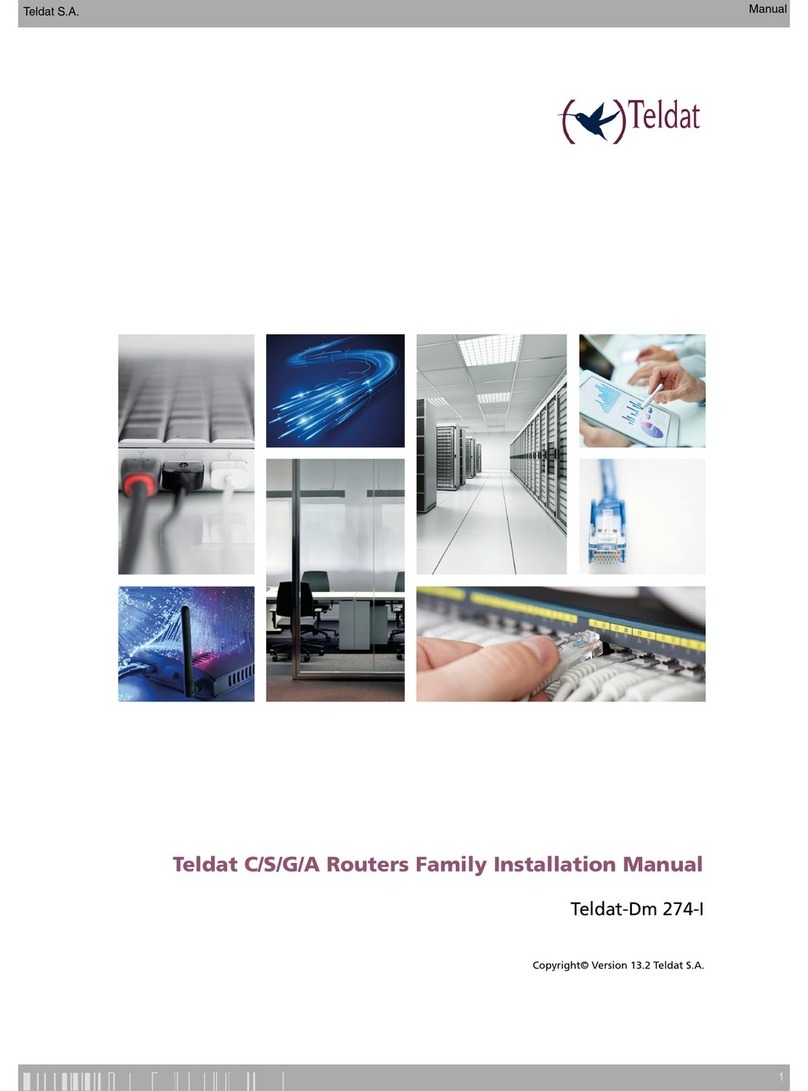
Teldat
Teldat C User manual
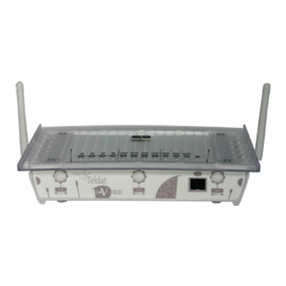
Teldat
Teldat TLDPV00A1 User manual
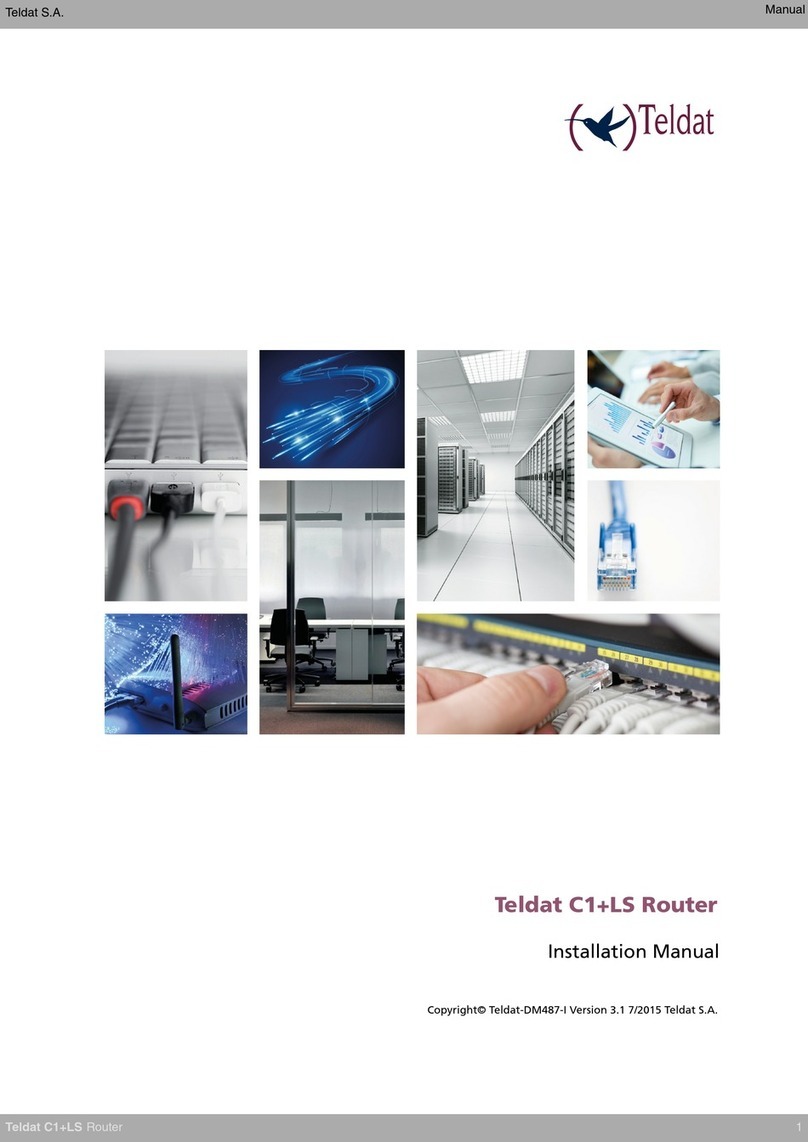
Teldat
Teldat C1+LS User manual
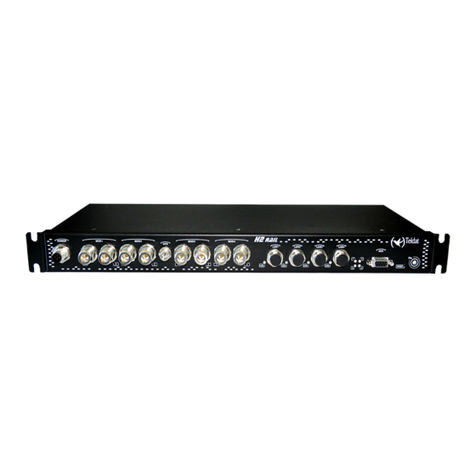
Teldat
Teldat H2 RAIL User manual
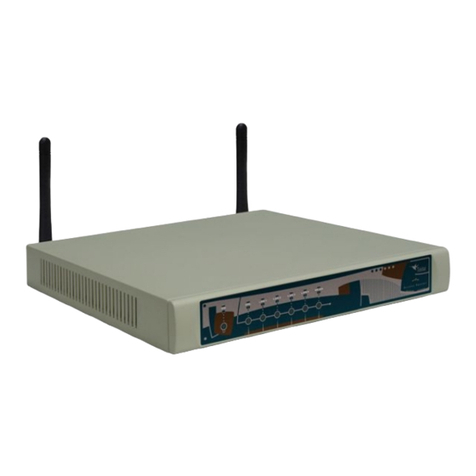
Teldat
Teldat C1+L User manual
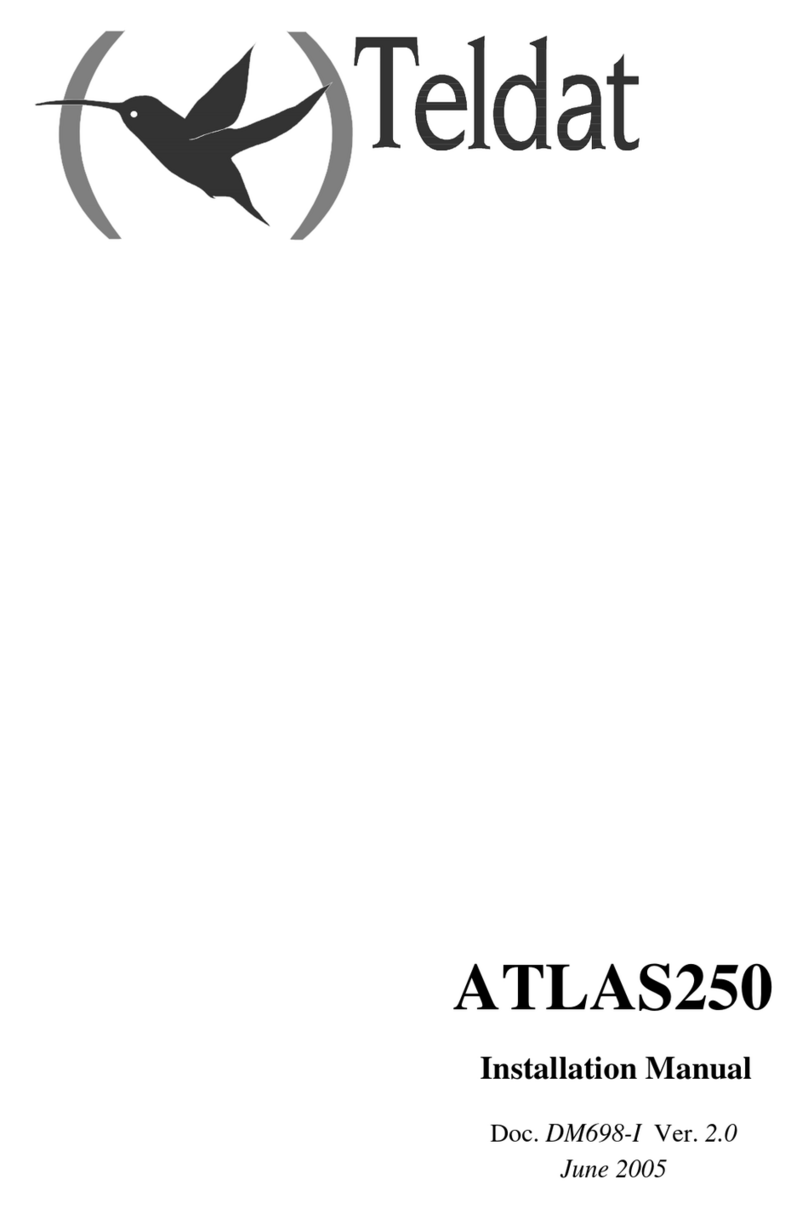
Teldat
Teldat Atlas 250 User manual
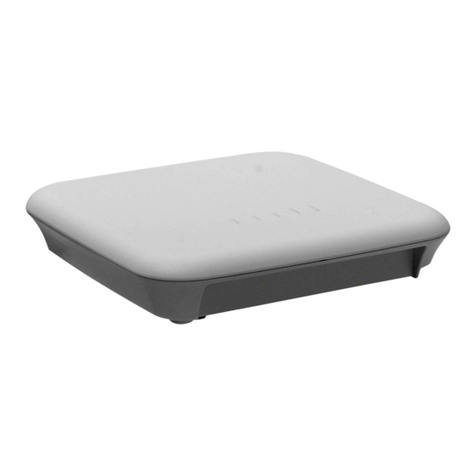
Teldat
Teldat WWAN Enabler User manual
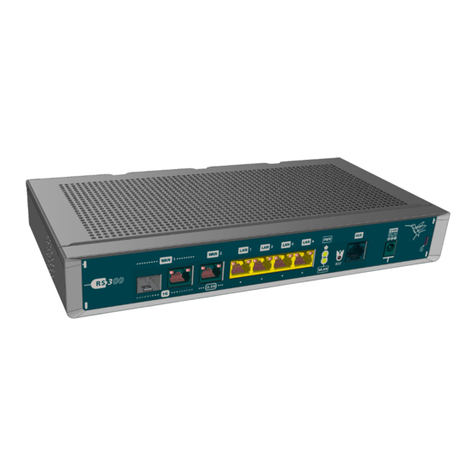
Teldat
Teldat RS300 Series User manual
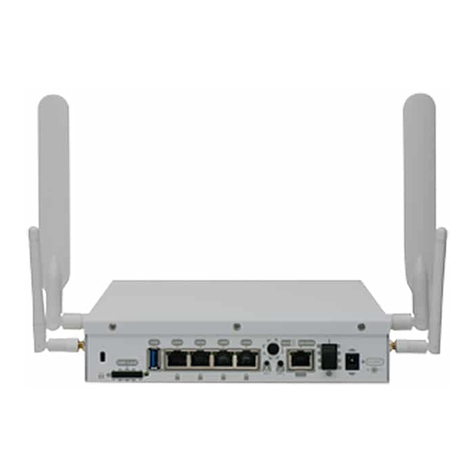
Teldat
Teldat M1 User manual
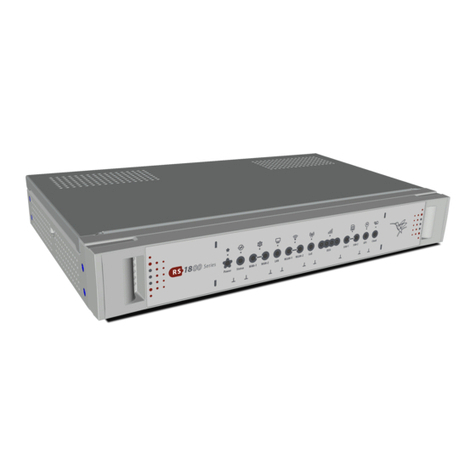
Teldat
Teldat RS1800 Series User manual

Teldat
Teldat H2 RAIL User manual
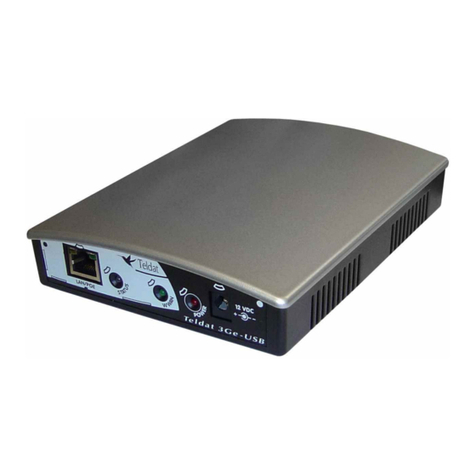
Teldat
Teldat Teldat-3Ge-USB User manual
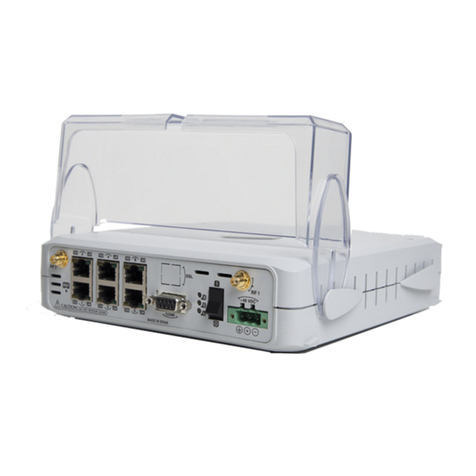
Teldat
Teldat Regesta-PRO ER B User manual

Teldat
Teldat G1N User manual
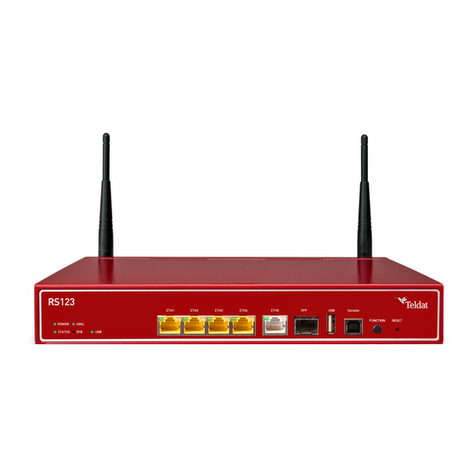
Teldat
Teldat RS123 Seies User manual
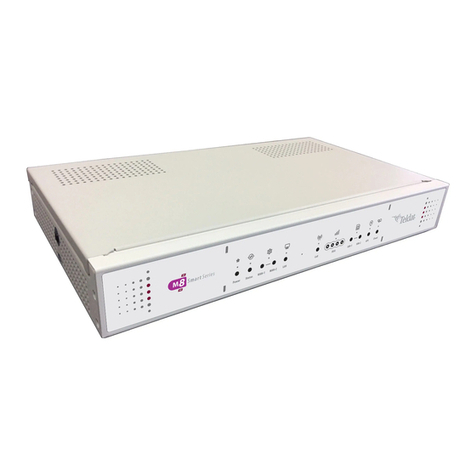
Teldat
Teldat M8-Smart User manual
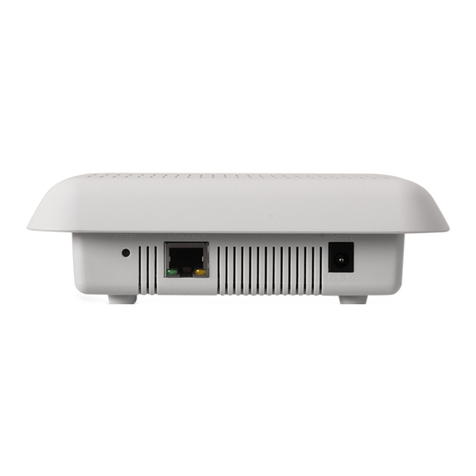
Teldat
Teldat 4Ge User manual
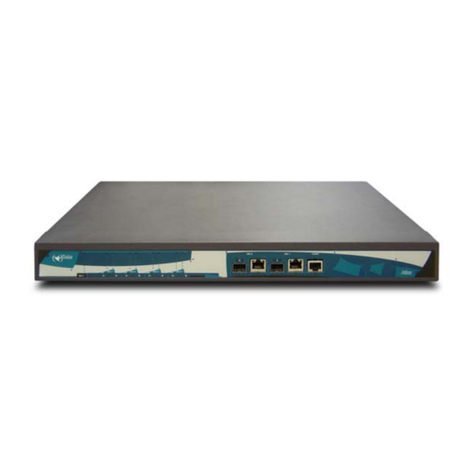
Teldat
Teldat ATLAS 160 User manual

Teldat
Teldat 4Ge User manual
